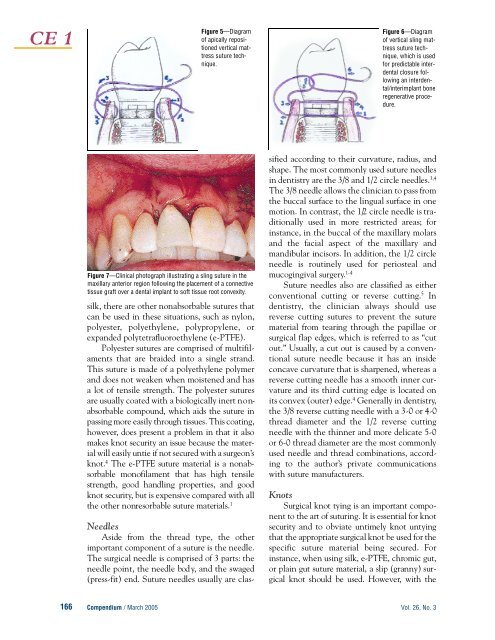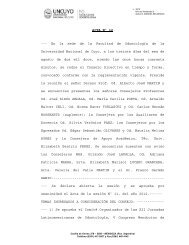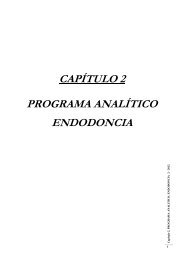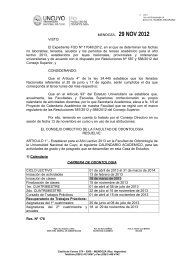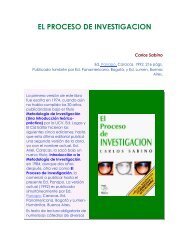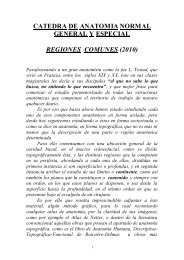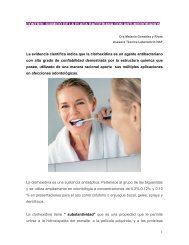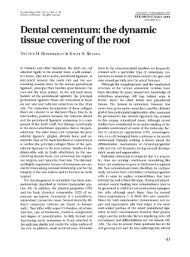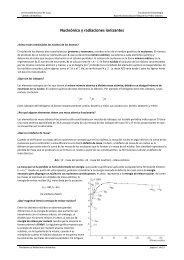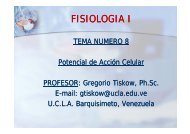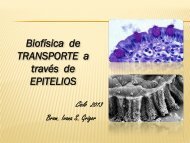A Review of Dental Suturing for Optimal Soft-Tissue Management
A Review of Dental Suturing for Optimal Soft-Tissue Management
A Review of Dental Suturing for Optimal Soft-Tissue Management
- No tags were found...
You also want an ePaper? Increase the reach of your titles
YUMPU automatically turns print PDFs into web optimized ePapers that Google loves.
CE 1Figure 5—Diagram<strong>of</strong> apically repositionedvertical mattresssuture technique.Figure 6—Diagram<strong>of</strong> vertical sling mattresssuture technique,which is used<strong>for</strong> predictable interdentalclosure followingan interdental/interimplantboneregenerative procedure.Figure 7—Clinical photograph illustrating a sling suture in themaxillary anterior region following the placement <strong>of</strong> a connectivetissue graft over a dental implant to s<strong>of</strong>t tissue root convexity.silk, there are other nonabsorbable sutures thatcan be used in these situations, such as nylon,p o l y e s t e r, polyethylene, polypropylene, orexpanded polytetrafluoroethylene (e-PTFE).Polyester sutures are comprised <strong>of</strong> multifilamentsthat are braided into a single strand.This suture is made <strong>of</strong> a polyethylene polymerand does not weaken when moistened and hasa lot <strong>of</strong> tensile strength. The polyester suturesare usually coated with a biologically inert n o n-absorbable compound, which aids the suture inpassing more easily through tissues. This coating,h o w e v e r, does present a problem in that it alsomakes knot security an issue because the materialwill easily untie if not secured with a surgeon’sk n o t . 4 The e-PTFE suture material is a nonabsorbablemon<strong>of</strong>ilament that has high tensilestrength, good handling properties, and goodknot security, but is expensive compared with allthe other nonresorbable suture materials. 1NeedlesAside from the thread type, the otherimportant component <strong>of</strong> a suture is the needle.The surgical needle is comprised <strong>of</strong> 3 parts: theneedle point, the needle bod y, and the swaged(press-fit) end. Suture needles usually are classifiedaccording to their curvature, radius, andshape. The most commonly used suture needlesin dentistry are the 3/8 and 1/2 circle needles. 3 , 4The 3/8 needle allows the clinician to pass fromthe buccal surface to the lingual surface in onemotion. In contrast, the 1/2 circle needle is traditionallyused in more restricted areas; <strong>for</strong>instance, in the buccal <strong>of</strong> the maxillary molarsand the facial aspect <strong>of</strong> the maxillary andmandibular incisors. In addition, the 1/2 circleneedle is routinely used <strong>for</strong> periosteal andmucogingival surgery. 1 - 4Suture needles also are classified as eitherconventional cutting or reverse cutting. 5 I nd e n t i s t r y, the clinician always should usereverse cutting sutures to prevent the suturematerial from tearing through the papillae orsurgical flap edges, which is referred to as “cutout.” Usually, a cut out is caused by a conventionalsuture needle because it has an insideconcave curvature that is sharpened, whereas areverse cutting needle has a smooth inner curvatureand its third cutting edge is located onits convex (outer) edge. 4 Generally in dentistry,the 3/8 reverse cutting needle with a 3-0 or 4-0thread diameter and the 1/2 reverse cuttingneedle with the thinner and more delicate 5-0or 6-0 thread diameter are the most commonlyused needle and thread combinations, accordingto the author’s private communicationswith suture manufacturers.KnotsSurgical knot tying is an important componentto the art <strong>of</strong> suturing. It is essential <strong>for</strong> knotsecurity and to obviate untimely knot untyingthat the appropriate surgical knot be used <strong>for</strong> thespecific suture material being secured. Forinstance, when using silk, e-PTFE, chromic gut,or plain gut suture material, a slip (granny) surgicalknot should be used. However, with the166 Compendium / March 2005 Vol. 26, No. 3


